Bolivia, a country of diverse landscapes and rich cultural heritage, offers a plethora of destinations for travelers seeking adventure and natural beauty. From the otherworldly Uyuni Salt Flats to the serene Titicaca Lake, the majestic Huayna Potosí Mountain, and the biodiverse Madidi National Park, each location has its own optimal time for a visit. Understanding the best time of the year to visit Bolivia will help you plan a trip that maximizes enjoyment and minimizes challenges.
The Dry Season: Winter (May to October)
The dry season in Bolivia, which spans from May to October, corresponds to the Southern Hemisphere’s winter. During this period, the weather is characterized by clear skies, cooler temperatures, and minimal rainfall. This season is ideal for most outdoor activities and exploration due to the stable weather conditions.
Key Characteristics:
- Clear Skies: The lack of rain results in bright, sunny days with clear skies, perfect for photography and sightseeing.
- Cool Temperatures: While the days are warm, nights can be quite cold, especially in high-altitude regions. It’s essential to pack layers to stay comfortable.
- Minimal Rainfall: The reduced precipitation means that trails are dry and accessible, and the risk of weather-related disruptions is low.
The Wet Season: Summer (November to April)
The wet season, from November to April, aligns with the Southern Hemisphere’s summer. This period is marked by higher temperatures and increased rainfall, leading to lush landscapes and unique natural phenomena. However, it can also bring challenges such as muddy trails and potential travel delays.
Key Characteristics:
- Increased Rainfall: Frequent rains lead to greener landscapes and fuller rivers, enhancing the natural beauty but also making some areas harder to access.
- Warmer Temperatures: Higher temperatures are common, especially in the lowlands and Amazon region. It’s important to stay hydrated and protect yourself from the sun.
- Unique Phenomena: The rain can create stunning visual effects, such as the mirror-like surface of the Uyuni Salt Flats, offering unique photo opportunities.
Destination-Specific Insights
1. Best time to go to Bolivia salt flats
Dry Season (May to October):
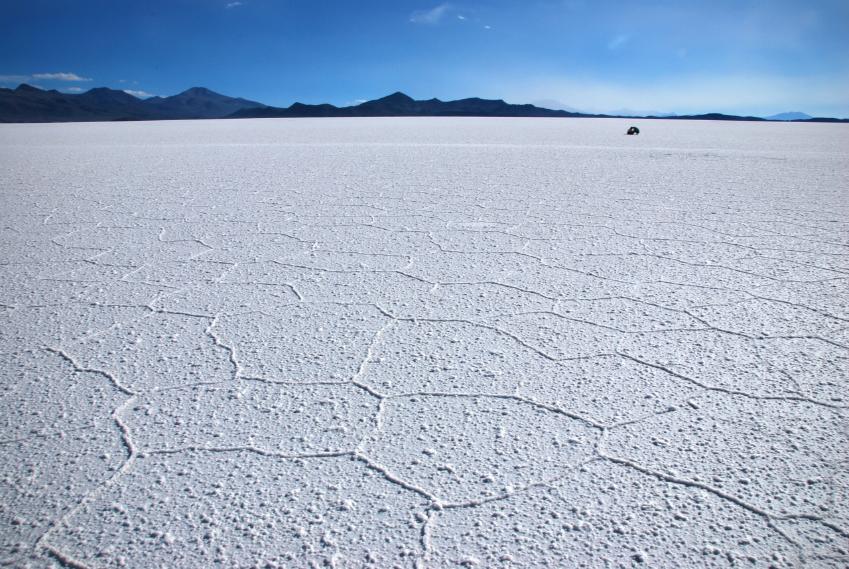
- The salt flats are dry, forming a vast, white expanse that stretches to the horizon. This is ideal for classic salt flat photos and accessing Isla Incahuasi.
- Cooler, stable weather makes travel more comfortable.
- Temperature Range: Max 68°F (20°C), Min 23°F (-5°C).
Wet Season (November to April):
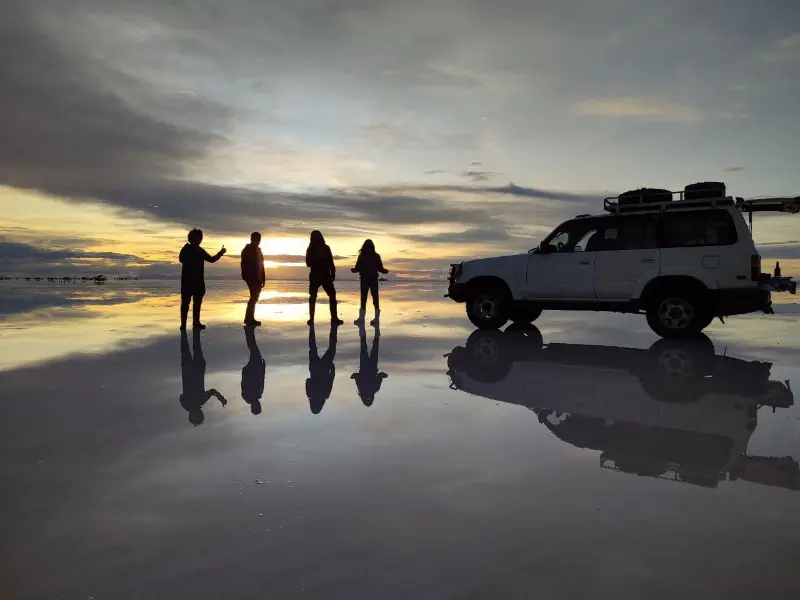
- A thin layer of water covers the flats, creating a mirror effect that reflects the sky and clouds, providing surreal photographic opportunities.
- Higher temperatures and potential travel delays due to rain should be considered.
- Temperature Range: Max 77°F (25°C), Min 41°F (5°C).
If you want to know about our offers to Salar de Uyuni, please clic here.
Uyuni Climate Chart (Potosí)
The city of Uyuni is located in the department of Potosí. Below, you can see the climate throughout the year:
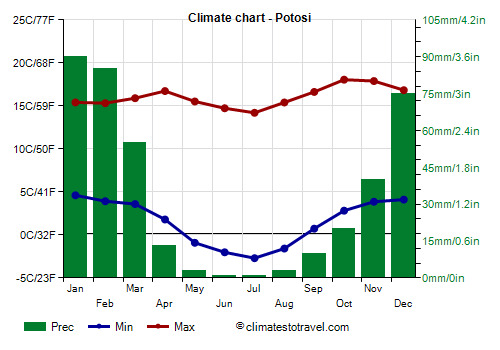
2. Best time to visit lake Titicaca
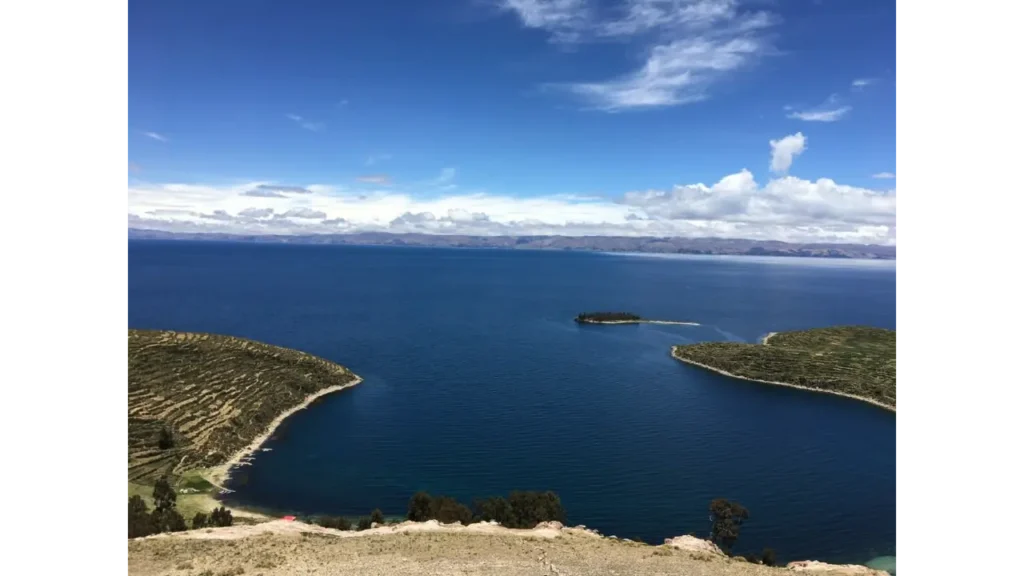
Dry Season (May to October):
- Pleasant weather with sunny days and cooler nights, ideal for boating and hiking.
- Clear skies enhance the beauty of the lake and surrounding landscapes.
- Temperature Range: Max 66°F (19°C), Min 30°F (-1°C).
Wet Season (November to April):
- Warmer temperatures but increased chance of rain, which can make outdoor activities less predictable.
- Lush landscapes and fewer tourists can enhance the tranquility of the experience.
- Temperature Range: Max 68°F (20°C), Min 41°F (5°C).
Titicaca Lake Climate Chart (La Paz)
The town of Copacabana (Titicaca Lake) is located in the department of La Paz. Below, you can see the climate throughout the year:
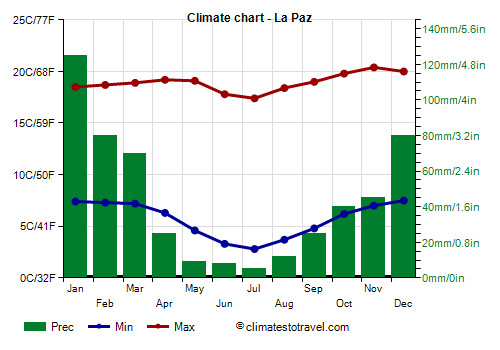
If you want to know about Titicaca Lake Tours, please clic here.
3. Best time to climb Huayna Potosi
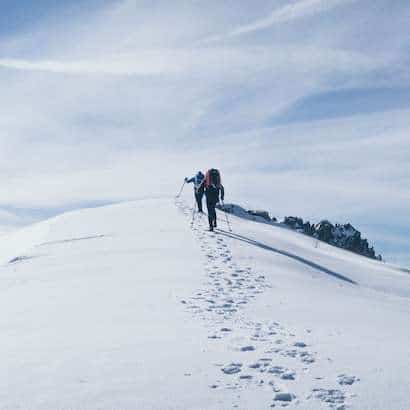
Dry Season (May to October):
- Best conditions for climbing with stable weather and less snow, making the ascent safer and more predictable.
- Clear skies provide spectacular views from the summit.
- Temperature Range: Max 50°F (10°C), Min 14°F (-10°C).
Wet Season (November to April):
- More challenging climbing conditions due to increased snowfall and potential avalanches.
- Fewer climbers, but the ascent can be riskier and more demanding.
- Temperature Range: Max 54°F (12°C), Min 19°F (-7°C).
You can climb this magnificent mountain with us, clic here for more information.
4. Best time to visit Madidi National Park
Dry Season (May to October):
- Predictable weather with dry trails, making jungle treks more enjoyable.
- Easier wildlife spotting as animals gather around water sources.
- Temperature Range: Max 86°F (30°C), Min 59°F (15°C).
Wet Season (November to April):
- Lush, green landscapes and increased biodiversity, though trails can be muddy and harder to navigate.
- Warmer temperatures and high humidity, requiring preparation for insect protection and staying cool.
- Temperature Range: Max 95°F (35°C), Min 68°F (20°C).
Do you want to visit Madidi National Park? Take a look at our tours here.
Best Time to Visit Bolivia
May to October (Dry Season/Winter) is generally the best time to visit Bolivia, offering optimal conditions for most destinations with clear skies, cooler temperatures, and minimal rainfall. The wet season (November to April/Summer), while warmer and wetter, offers unique experiences such as the reflective Uyuni Salt Flats and lush, green landscapes. Each destination in Bolivia provides a unique experience depending on the time of year, so understanding the seasonal variations can help tailor your trip to match your interests and activities. Whether you are climbing mountains, exploring vast salt flats, or delving into the rich biodiversity of the Amazon, Bolivia has something extraordinary to offer all year round.
Visit our destinations in Bolivia any time of year you want. For more information click here.

